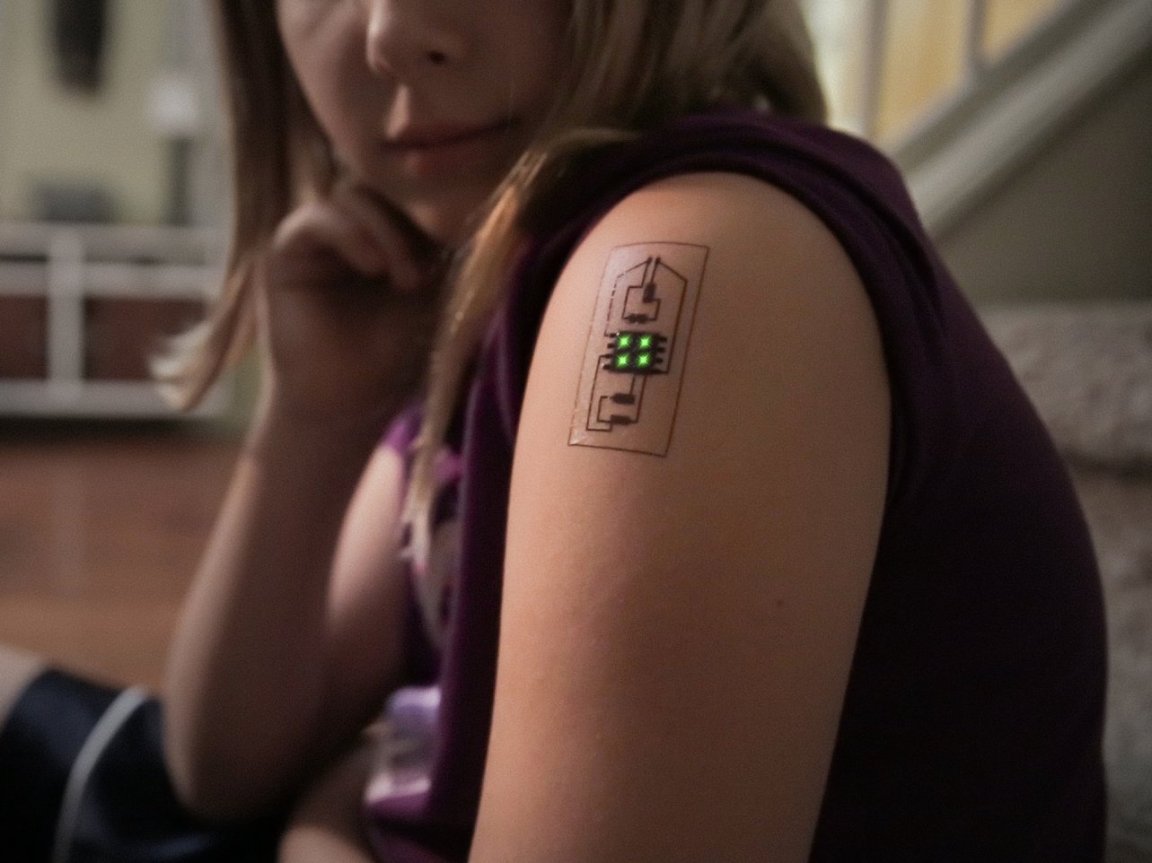
Graphene Tattoo Wearables
Researchers have designed a temporary tattoo created from graphene that can be applied to the skin with water. But, unlike a standard temporary tattoo that features images and colors, these graphene-based tattoos are almost transparent, lending graphene’s unique electronic properties to the wearer. Thanks to these properties, the graphene tattoos work like wearable electronic devices, enabling biometric uses, such as monitoring the electrical activity of the brain, heart, and muscles. The tattoos would even allow the wearer to directly interact with machines. These tattoos offer complete functionality for about two days or more, but can be removed simply with a piece of adhesive tape.

Graphene is, essentially, a one-atom thick layer of graphite, made from elemental carbon. It’s thought of as a super material because it can be stretched to a quarter of its length despite its toughness, and it can conduct electricity at room temperature faster than any other known substance. Graphene is also biocompatible, making it ideal for biomedical uses — like wearable monitors.
Future Applications
The graphene electronic tattoo works like many commercially available, wearable health and fitness trackers and, just like other wearables, it can monitor both heart rate and bioimpedance, one way to determine the body’s response to electrical current. However, these graphene tattoos offer several advantages over other wearables. The ultra-thin tattoos conform to the skin, unlike larger, clumsier electronics that are mounted onto the skin with straps. They, therefore, offer higher-quality sensing with less vulnerability to motion artifacts and no need for mounting straps, paste, or gel which other wearables require for their electrodes to work.
Coauthor Shideh Kabiri Ameri told Phys.org: “This area of research can have applications for the internet of things, smart houses and cities, human computer interaction, smart wheelchairs, speech assistance technology, monitoring of distracted driving, and human-robot control. Recently we have demonstrated the application of graphene tattoos for sensing human signals to wirelessly control flying objects. That demonstration will be reported in the near future.”